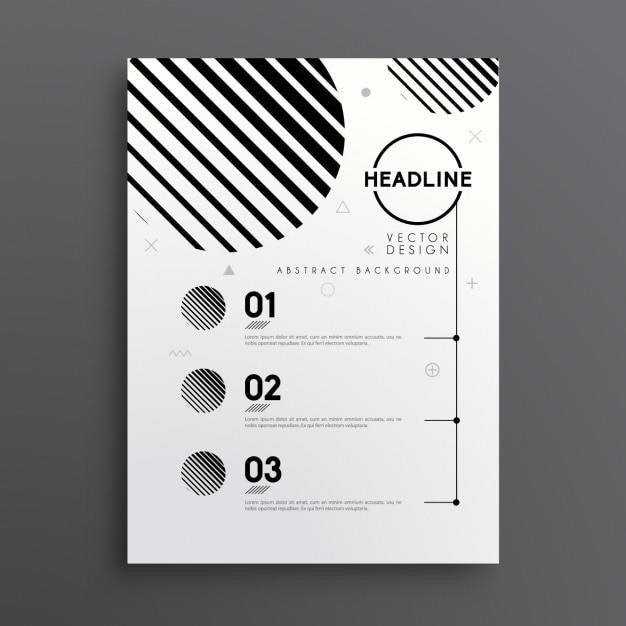Converting MIDI to PDF⁚ A Comprehensive Guide
This guide explores the process of converting MIDI files into PDF format, providing a detailed understanding of the steps involved and the advantages of this conversion․ From utilizing online converters to employing software applications, we delve into various methods, offering insights on optimizing the conversion process for optimal results․ Discover the benefits of converting MIDI to PDF, such as preserving musical notation, enhancing accessibility, and facilitating sharing and printing․ This comprehensive resource empowers musicians and music enthusiasts alike to seamlessly transform their MIDI files into readily accessible PDF documents․
Understanding MIDI and PDF
MIDI (Musical Instrument Digital Interface) and PDF (Portable Document Format) represent distinct file formats with unique purposes in the realm of music and digital document management․ MIDI files, essentially a set of instructions, contain musical data such as note duration, pitch, and timing․ These instructions are not audio recordings but rather a representation of musical performance, making them ideal for editing, arranging, and manipulating musical compositions․
On the other hand, PDF files are versatile document formats designed for preserving the visual layout and formatting of digital documents․ They are widely used for sharing, printing, and archiving documents, ensuring consistent appearance across different platforms and devices․
Understanding the fundamental differences between MIDI and PDF is crucial for appreciating the conversion process․ While MIDI focuses on capturing the musical essence of a composition, PDF excels in preserving the visual presentation of the musical score․ This distinction highlights the potential for converting MIDI files into PDF formats, allowing musicians to create visually appealing scores that can be easily shared, printed, and archived․

Why Convert MIDI to PDF?
Converting MIDI files to PDF format offers several compelling reasons for musicians, composers, and music enthusiasts․ The primary benefit lies in the ability to create visually appealing and easily shareable scores․ While MIDI files are primarily for musical data, they lack the visual presentation of traditional sheet music․ Converting to PDF allows you to transform MIDI data into a structured, visually pleasing format․
This conversion also enhances accessibility for musicians․ Sharing a PDF score ensures that recipients can view and interact with the music notation regardless of their software or device․ PDF format is compatible across platforms, making it an ideal choice for sharing scores with collaborators, students, or audiences․
Furthermore, converting MIDI to PDF facilitates printing․ Musicians can print high-quality scores, ensuring accurate representation of the musical notation․ The consistent formatting of PDF files guarantees that the printed output maintains the intended visual layout and legibility, making it suitable for rehearsal, performance, and archiving purposes․
In essence, converting MIDI to PDF bridges the gap between the digital realm of musical data and the traditional format of sheet music, offering a practical and versatile solution for sharing, printing, and archiving musical compositions․
Methods for Converting MIDI to PDF
The conversion of MIDI files to PDF format can be achieved through a variety of methods, each offering its own advantages and considerations․ The most common approach involves utilizing online converters, which provide a user-friendly and accessible platform for converting MIDI files․ These services typically require you to upload your MIDI file, select PDF as the output format, and then download the converted file․ Many online converters offer additional features, such as adjusting page size, orientation, and other settings, to tailor the output to your preferences․
Alternatively, software applications specifically designed for MIDI to PDF conversion offer more comprehensive features and control over the conversion process․ These applications often include advanced capabilities for customizing the appearance of the sheet music, such as selecting different fonts, instrument icons, and layout options․ This level of control allows for a more tailored and professional-looking output․
Finally, music composition tools, such as those used for creating and editing scores, often have built-in functionality for exporting MIDI data to PDF format․ This method provides a seamless workflow for composers who already use these tools for creating their music․
The choice of method depends on your specific needs and preferences․ Online converters offer convenience and accessibility, while software applications provide more control, and music composition tools offer a streamlined approach for composers․
Using Online Converters
Online converters offer a convenient and accessible method for converting MIDI files to PDF format; These web-based tools eliminate the need for software installation, allowing users to perform the conversion directly from their web browser․ The process is typically straightforward⁚ users upload their MIDI file, select PDF as the desired output format, and then download the converted file․ Some online converters offer additional features, such as adjusting page size, orientation, and other settings, to tailor the output to the user’s preferences․
One notable example is OnlineConvertFree, which provides a user-friendly interface for converting MIDI files to PDF․ Users can simply drag and drop their MIDI files onto the webpage, and the converter will handle the conversion process automatically․
Another online converter, Zamzar, is known for its wide range of supported file formats, including MIDI and PDF․ Users can upload their MIDI files and convert them to PDF, along with over 250 other file formats, without the need for registration or email addresses․
Online converters are ideal for users who require a simple and quick solution for converting MIDI files to PDF format․ They offer accessibility, ease of use, and often provide additional customization options for tailoring the output to specific needs․
Employing Software Applications
For users seeking greater control and flexibility in converting MIDI files to PDF, dedicated software applications offer a comprehensive range of options․ These applications often provide advanced features for manipulating MIDI data, customizing output settings, and generating high-quality PDF documents․ They cater to both novice and experienced users, enabling them to convert MIDI files to PDF with precision and efficiency․
One prominent example is MelodyScribe, a software application designed specifically for converting MIDI and PDF files into annotated sheet music․ This tool allows users to import MIDI files, convert them to sheet music, and add letter notes for enhanced readability․ MelodyScribe provides a seamless workflow for converting MIDI files into visually appealing and informative sheet music documents․
PlayScore is another noteworthy software application that excels in converting PDF sheet music to MIDI files․ This advanced tool offers a range of features, including the ability to scan sheet music using a camera, import PDF files directly, and convert them into MIDI format․ Users can select specific sheet pages for conversion, making it ideal for handling large music scores․
Software applications offer a robust solution for converting MIDI files to PDF, providing advanced features, customization options, and a higher level of control over the conversion process․ They are particularly well-suited for users who require precise control over the output and seek to generate high-quality PDF documents․
Leveraging Music Composition Tools
Music composition tools, designed for creating and editing musical scores, often include built-in functionality for exporting MIDI files to PDF format․ These tools, such as Sibelius, Finale, and MuseScore, provide a comprehensive environment for composing, arranging, and producing musical scores, and they offer seamless integration with PDF output․ This approach allows musicians to directly generate PDF versions of their compositions from within their familiar music composition environment, ensuring optimal accuracy and fidelity․
By leveraging the capabilities of music composition tools, musicians can convert their MIDI files to PDF with ease and precision․ They can fine-tune the layout, adjust the notation style, and customize the appearance of their sheet music before exporting it to PDF format․ The integration of MIDI-to-PDF conversion within these tools streamlines the workflow, making it a convenient option for musicians who are already familiar with their features and functionalities․
For example, Sibelius, a widely recognized music notation software, allows users to export their MIDI files to PDF format with a few clicks․ It provides a range of options for customizing the appearance of the PDF document, including the ability to adjust page margins, font styles, and note sizes․ Finale, another popular music notation software, offers similar capabilities, providing users with a flexible and user-friendly interface for converting MIDI files to PDF․
The use of music composition tools for converting MIDI files to PDF offers a convenient and efficient solution, especially for musicians who are already familiar with these tools․ It allows for greater control over the output, customization of the PDF document, and the generation of high-quality sheet music․
Tips for Successful Conversion
Converting MIDI to PDF can be a straightforward process, but certain tips can ensure a successful and accurate conversion․ First, it’s crucial to ensure the MIDI file is properly formatted and free of errors․ Check for missing or corrupted data, as these issues can affect the final PDF output․ To enhance the readability of the PDF sheet music, consider adjusting the tempo and dynamics of the MIDI file before conversion․ This step helps to ensure that the converted sheet music accurately reflects the intended musical performance․
When using online converters, be mindful of the file size limits and choose the appropriate conversion settings for your specific needs․ Some converters offer additional options like the ability to select page size, orientation, and other formatting preferences․ Leveraging these features can help create a visually appealing and readable PDF document․
If using software applications or music composition tools, familiarize yourself with their specific features and settings related to MIDI-to-PDF conversion․ These tools often offer customization options for notation style, instrument representation, and layout, allowing for greater control over the final output․
Before finalizing the conversion, it’s advisable to preview the generated PDF file; This step allows you to review the sheet music for any errors or inconsistencies and make necessary adjustments․ By following these tips, you can ensure a successful MIDI to PDF conversion, resulting in a high-quality and accurate representation of your musical composition․
Converting MIDI to PDF offers musicians and music enthusiasts a versatile and convenient way to share, print, and archive their musical compositions․ The ability to transform digital music data into a printable format has revolutionized the way music is created, shared, and enjoyed․ Whether you’re a professional composer, a hobbyist musician, or a student learning to read sheet music, the conversion process provides a valuable tool for preserving, organizing, and distributing musical creations․
From online converters to dedicated software applications, various methods cater to different user needs and technical capabilities․ The flexibility of these conversion tools empowers users to tailor the output to their specific requirements, ensuring a visually appealing and accurate representation of the original MIDI file․
The availability of free and paid conversion options makes this process accessible to a wide range of users, fostering the creation and dissemination of musical works․ As technology continues to evolve, we can expect even more sophisticated and user-friendly tools for converting MIDI to PDF, further enhancing the experience for musicians and music lovers worldwide․


